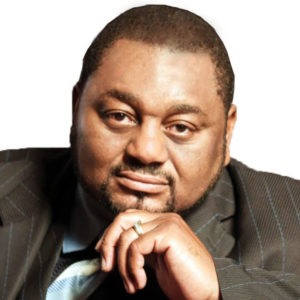Knowledge Management in Long-Term Care: What You Need to Know
| The above quote comes from Kahlil Gibran, an early 20th-century poet, philosopher, and artist. And although Gibran lived in the precomputer era, the quote is surprisingly apropos today when one is thinking about knowledge management systems and an important component of them called "digital dashboards." The idea becomes especially germane when one is pondering the state of information technology in the long-term care industry. For many generations now, computerization in long-term care has focused almost exclusively on improving processes. But for long-term care organizations to get more out of information technology than just an adrenaline jolt to established processes, nursing home administrators need to start considering the value of knowledge management systems. Before purchasing, implementing, and benefiting from these systems, however, nursing home administrators first need to truly understand what a knowledge management system is-and why a long-term care organization would need one. Then, to get the most out of a system, administrators need to know what features and attributes to look for. Useful Knowledge Indeed, the idea is fleshed out in some of the following commonly held definitions of a knowledge management system:
All of these definitions-to one extent or another-support Gibran's notion that knowledge people can use is so much more valuable than knowledge that simply sits idle. Certainly, there is ample need for the dispersion of relevant, useful knowledge in long-term care organizations. And while computer systems have for many years had the ability to capture and store information in databases, long-term care users often have experienced frustration when trying to turn that information into usable "knowledge." Searching databases and scouring through electronic files is simply too onerous to fit into the typical long-term care professional's work flow. But knowledge management systems can turn all of that miscellaneous information into practical knowledge by:
Presenting information in a "dashboard display" also makes data much more useful for users. For example, such dashboards can support touch-points in long-term care work flow by consolidating real-time information on configurable, graphically oriented screens-enabling users to instantly view key performance indicators and proactively spot trends, anomalies, and exception conditions. The dashboards make it much easier to get needed information-and turn it into actionable knowledge. For example:
The Need to Know in Long-Term Care Consider the following: The Centers for Medicare & Medicaid Services (CMS) posts quality information on individual nursing homes on the Internet, making it possible for families to easily compare and contrast quality when making nursing home decisions. What's more, improving quality will become increasingly tied to the financial bottom line as pay-for-performance becomes a reality in the long-term care industry. As a result, nursing homes need to do whatever it takes to improve their performance, says Evan Newton, president of Newton and Associates, a long-term care consulting company based in Minneapolis. "Knowledge management is key as nursing homes move forward," Newton says. "With the increasing emphasis on the delivery of quality care, all nursing home staff members need to focus on having the information to do their jobs-and to make care delivery improvements." With a knowledge management system, for example, nursing homes can more proactively manage the quality of care delivered. "If nursing homes have quality information in a timely manner, then staff members can respond to situations in a timely manner. When the information is delivered in real time, it is much easier to always do the right thing," Newton says. In addition, knowledge management systems can help improve communication within long-term care organizations, Newton says. For instance, he recently was working with a nursing home in which the therapy department issued new treatment orders for a resident on a Friday afternoon. The nursing staff, however, did not get the revised treatment orders until Monday. "For an entire weekend, the nurses had no idea that there was a change in orders," Newton says. "If they had been working with a knowledge management system, the nurses would have had that information immediately." A knowledge management system would provide nurses with a dashboard containing all changes in patient orders and other pertinent clinical care information. Because knowledge management systems make it so easy to access such information, the systems also could encourage physicians and physician assistants to become more proactively involved in the care of residents. "Paper-based systems are simply too cumbersome for physicians to access," Newton says. "And electronic systems have been unattainable to them. A lot of these systems just take too much time to learn. With a knowledge management system, though, physicians and physician assistants could become easily engaged." Indeed, knowledge management systems that offer knowledge based on user roles have the most potential to positively affect nursing home care and quality. They provide users with role-based dashboards that include "cubes" of relevant information for each individual user. The cubes offer different and distinct sets of knowledge to various users such as intake workers, nurses, clinical coordinators, and management personnel. For example, a management dashboard could include information on receivables, case mix, admissions, quality indicators, and per-bed revenue analysis (figure). Some of these systems feature a collection of digital dashboards, Web portals, and analyzer modules that incorporate service-specific business rules and care protocols, distill critical information, and automate key work-flow processes for targeted clinical, financial, and administrative users. Digital dashboards consolidate key performance metrics from multiple modules and display them on flexible, Web-based screens. Web portals enable physicians, nurses, and other users to access patient records through secure Web connections, eliminating the need for paper documentation. Analyzer modules query and benchmark individual and aggregate clinical records by comparing patient outcomes with those of various reference groups. "With such systems in place, nursing homes will be able to truly improve quality on an ongoing, continuous basis," Newton says. "As a matter of fact, quality improvement will be built into the work flow of all staff members, and the impact will be readily seen in the improved care that residents receive." Kandasamy "Pasu" Pasupathy is President and CEO of InfoSys, Inc., a Schaumburg, Illinois'based information technology company that offers integrated technology solutions for the healthcare continuum. The company's CareVoyant System features a collection of digital dashboards, Web portals, and analyzer modules that incorporate service-specific business rules and care protocols to distill critical information and automate key work-flow processes for targeted clinical, financial, and administrative users. For more information, call (888) 463-6797. To send comments to the author and editors, e-mail pasupathy0706@nursinghomesmagazine.com. References |
I Advance Senior Care is the industry-leading source for practical, in-depth, business-building, and resident care information for owners, executives, administrators, and directors of nursing at assisted living communities, skilled nursing facilities, post-acute facilities, and continuing care retirement communities. The I Advance Senior Care editorial team and industry experts provide market analysis, strategic direction, policy commentary, clinical best-practices, business management, and technology breakthroughs.
I Advance Senior Care is part of the Institute for the Advancement of Senior Care and published by Plain-English Health Care.
Related Articles
Topics: Articles , Leadership











